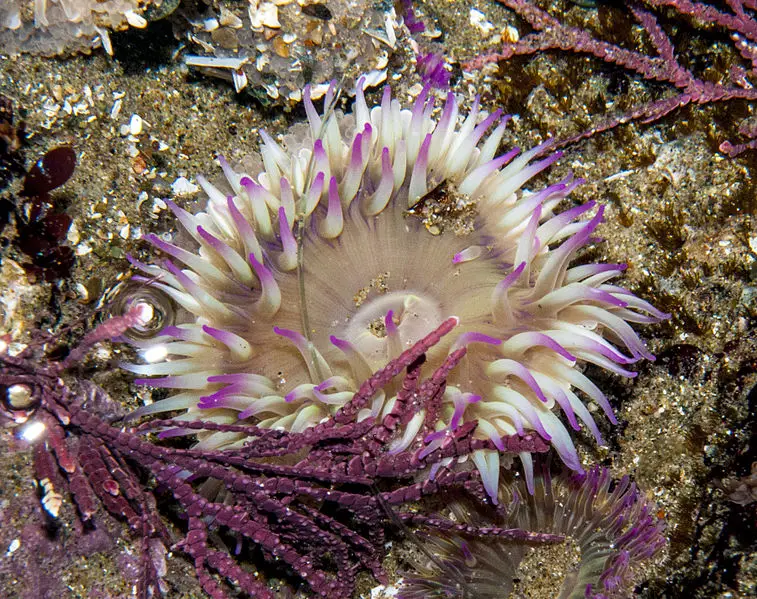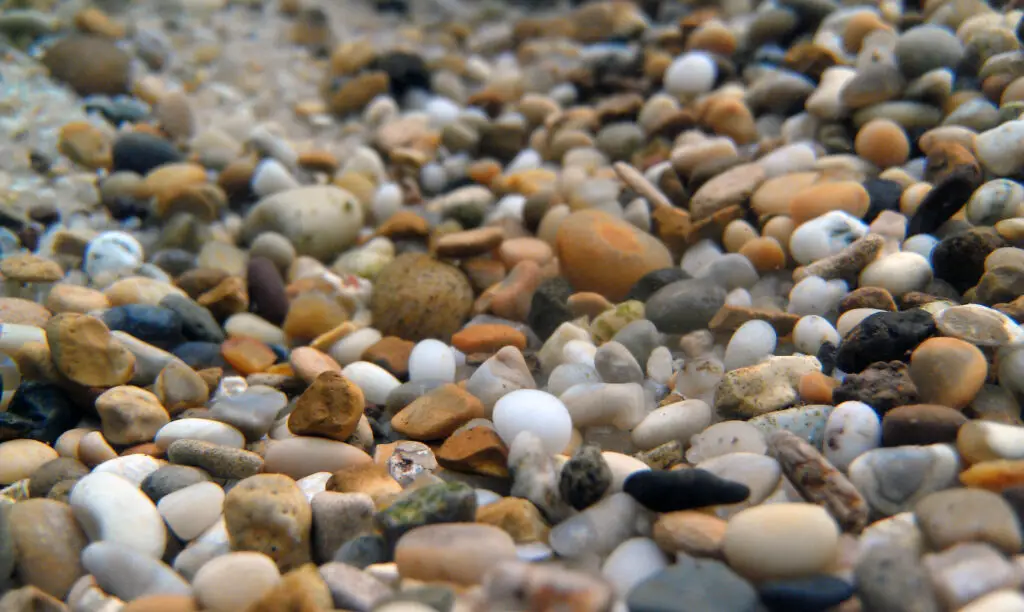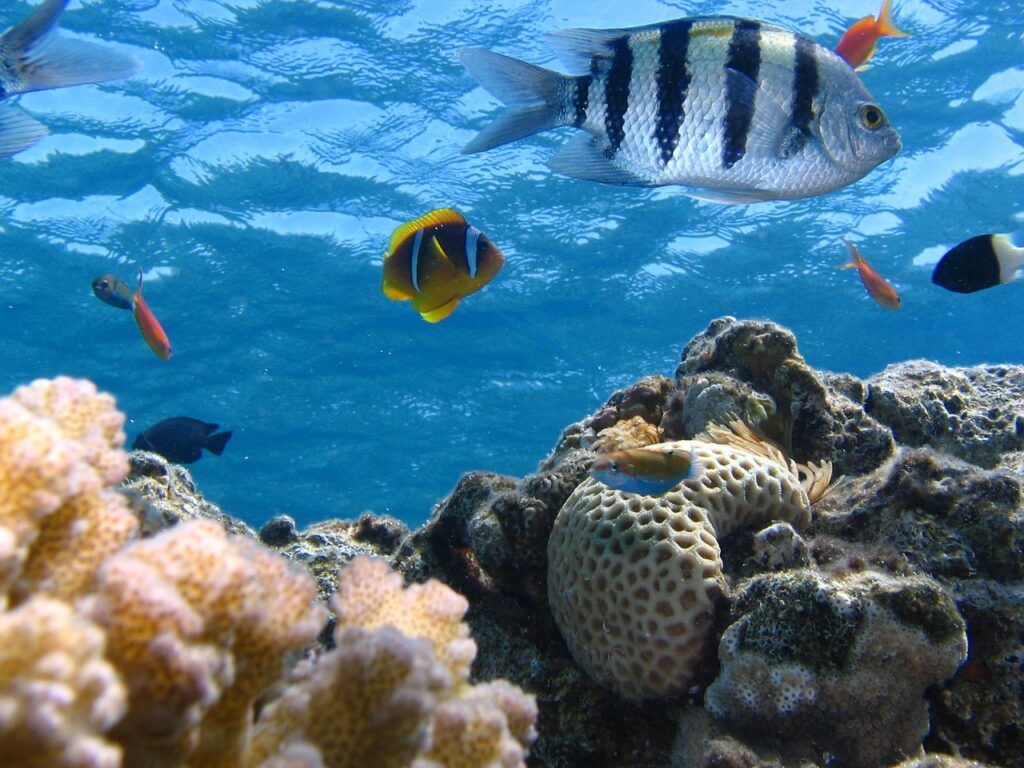Purple tip anemones require a specific kind of care and maintenance to keep them healthy. If you’re growing them in your home aquarium, you’ll need to know how to feed them, so they reach their full potential.
Most of the nutrient intake for purple tip anemones comes from sunlight (photosynthesis). However, they also use their tentacles to catch and consume small fry, invertebrates, and young fish, so you’ll need to supply these nutrients within your aquarium.
In this article, I’ll be exploring the best ways to take care of a purple tip anemone, including information regarding what they eat, how much they eat, and how big they eventually grow to be.
Caring for White Anemone with Purple Tips
When you begin to care for white anemones with purple tips, keep in mind that these creatures aren’t easy to maintain, and they can sting you. They are delicate and need strict living parameters. This is why you should use a seasoned tank that’s been running for at least six months.
Set up your tank with water that has high levels of dissolved oxygen, 8.1-8.3 pH, 1.024-1.026 salinity, 400-450 calcium levels, 1250-1350 ppm magnesium, less than 2 ppm nitrate, less than 0.002 ppm phosphate, and 0 ppm of nitrite and ammonia. Further, you want to make sure that the temperature stays steadily between about 76 degrees F and 78 degrees F.
Maintaining these environmental factors will play a huge role in mirroring the environment of seawater that is natural to anemones.
What Do Purple Tip Anemones Eat?
Purple tip anemones, also known as sebae anemones, are known to feed on several kinds of creatures, from small to large. These three are the most commonly preferred foods for this reef aquarium creature:
- Juvenile fish
- Fry
- Small invertebrates
Keep in mind that you don’t necessarily have to feed purple tip anemones, as they can survive on sunlight alone when you give them an optimal aquarium environment. However, some people choose to feed them food from time to time.
Fish
Note that sebae anemones are hosts to certain breeds of fish, including clown anemonefish, two-band anemone-fish, red saddleback anemonefish, orange anemonefish, and several others. But these hosted fish aren’t to be confused with small fish that anemones sometimes eat.
Some fish you can feed the purple tip anemone include fresh, raw tilapia.
You can prepare it by washing it thoroughly and removing any shells and bones. Then, cut it up into small pieces and freeze it overnight. When you’re ready to feed your anemone, you can thaw the fish in aquarium tank water. You might want to add some vitamin additives to the water you’re thawing them in at this point.
Small Invertebrates
In terms of small invertebrates, prepare your fresh, raw anemone food just as you would prepare the fresh, raw fish like tilapia. Sebae anemones like invertebrates such as shrimp, mussels, squid, and scallops.
Fry
Third, you might feed your purple tip anemone fry from time to time. Fry are baby fish that have just reached the life stage of being able to feed themselves.
Dietary Tips
Be careful if you choose to feed your purple tip anemones. Giving them low-quality foods or unclean foods can result in bacterial infections that may lead to their demise.
Purple Tip Anemone Feeding Schedule
If you’re going to feed your anemone, you really only need to do so once a week or even less often. They can grow quite large, so you don’t want to overfeed them.
How to Feed Anemones
To feed your anemone raw fish or invertebrates, use a feeder stick. Grab or attach the food you want to use with the stick, and touch the anemone with the food gently and without poking. At this point, the anemone will use its tentacles to take the food and eat it.
Purple Tip Anemone Sunlight Needs
Another important part of taking care of the purple tip anemone is making sure that it has adequate sunlight. These creatures rely heavily on photosynthesis to sustain them.
Inside the tissues of sebae anemone live symbiotic hosts called zooxanthellae, which are single-celled dinoflagellates. It’s because of these tiny organisms that the purple tip anemone is able to carry out the photosynthesis it needs to thrive.
In terms of the amount of light needed, these creatures require a lot. Think about how you would care for corals in a home aquarium; anemones need a comparable amount of light. As a rule of thumb, stick with high-quality LED lights or T5 HO lights that can provide about 4 watts per gallon.
Purple Tip Anemone Oxygen Needs
These anemones also need ideal oxygen levels in their water, which is why you should make sure the water moves regularly at the tank’s surface. You can also regulate oxygen with a protein skimmer.
How Big Do Purple Tip Anemones Get?
Finally, you want to be aware of anemone sizes so that you can accommodate yours with the right sized tank. Purple tip anemones can grow to be quite large, taking up more than a standard tank in size. They can reach about 30 inches overall, although their tentacles tend to stay around 1 ½ inches to 2 ½ inches long.
When starting out, you can use a tank that is around 20 inches, but keep in mind that it will be difficult to move your anemone to a larger tank and mess with its environmental stability. That’s why it’s recommended to start with a pretty large tank to accommodate them.
Final Thoughts
Caring for anemones is no easy task, especially when it comes to the white anemone with purple tips. These creatures require very specific living parameters, including an exact temperature, pH balance, salinity level, sunlight level, feeding habits, and more.
If you are planning to care for this creature in a home aquarium, then you need to put some forethought into the project and take it seriously. You don’t want to be ill-prepared and end up mishandling this aquatic life form.



